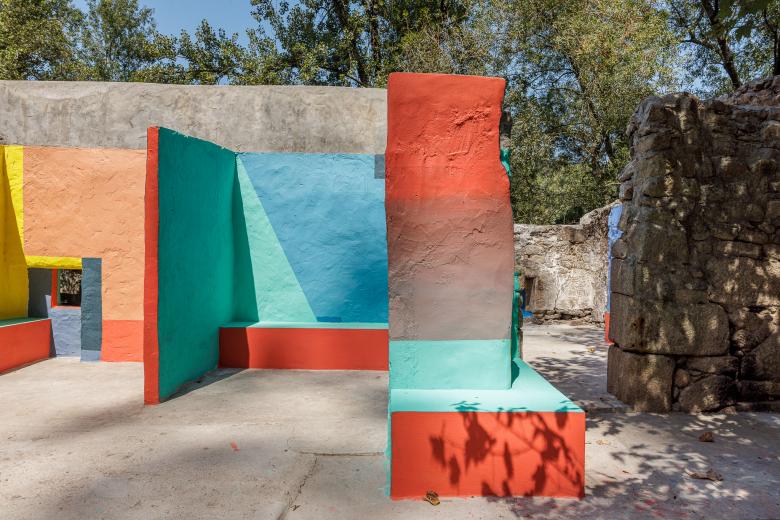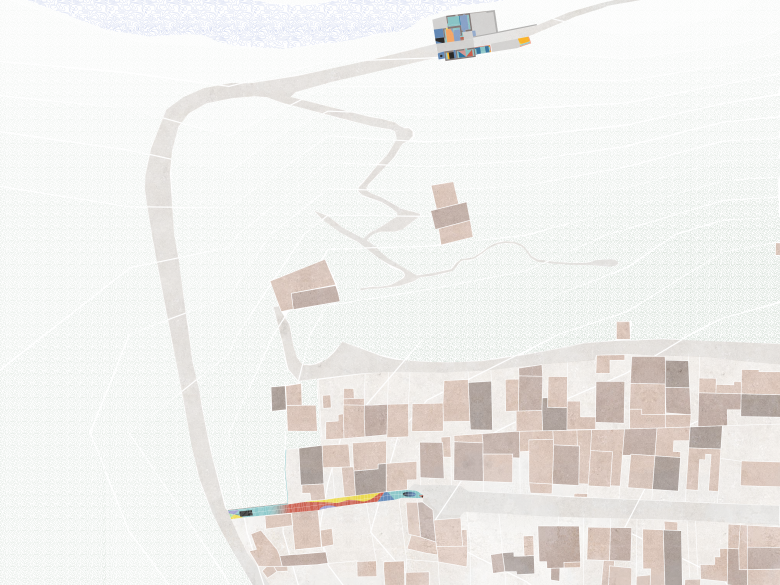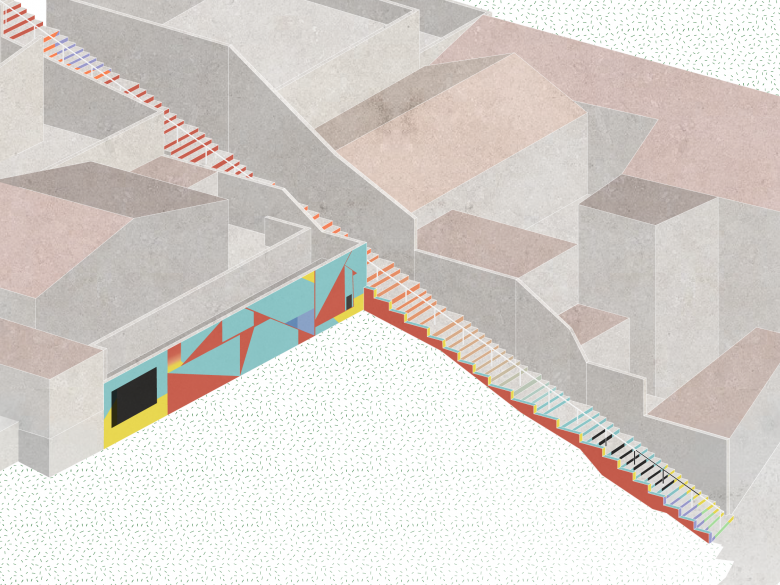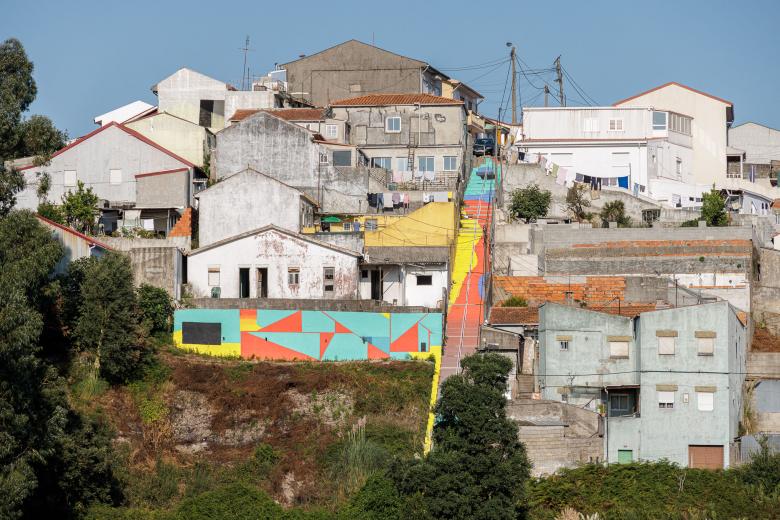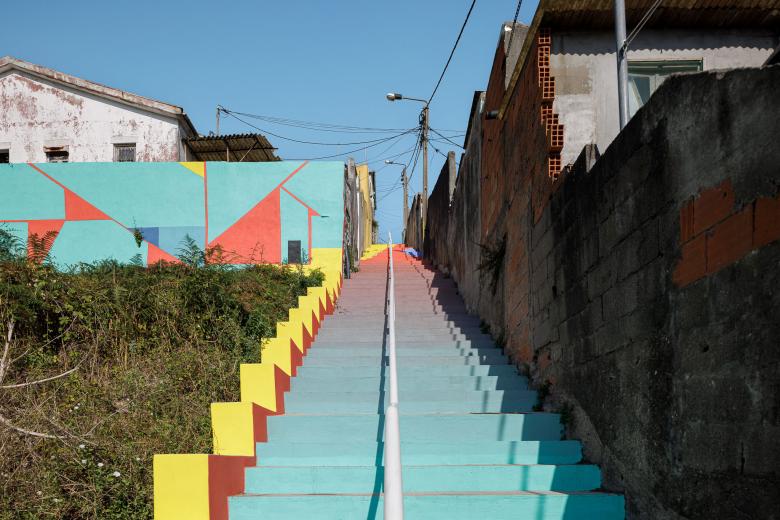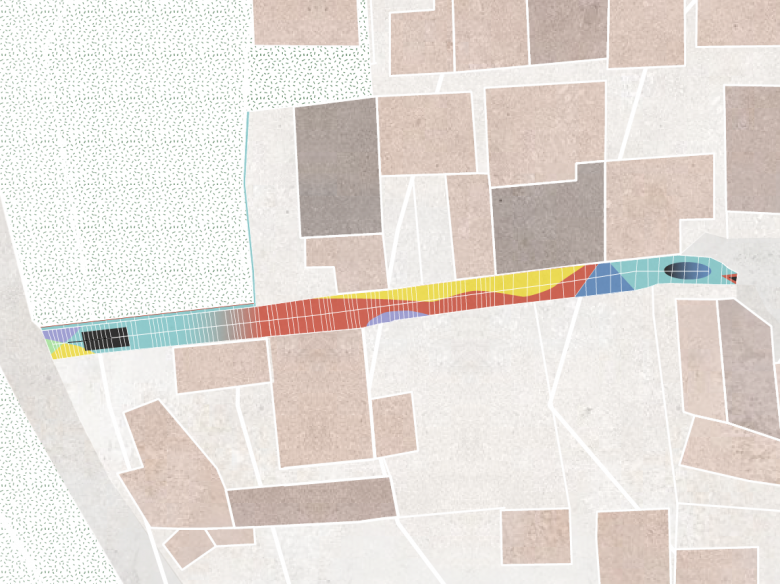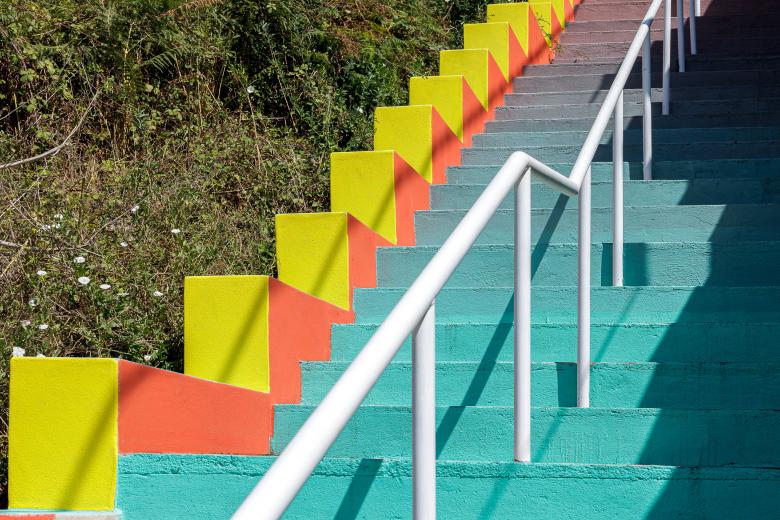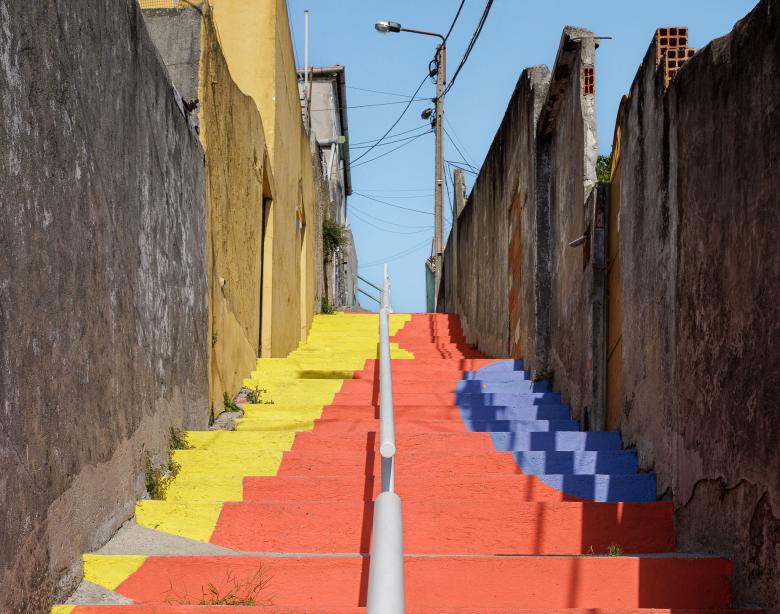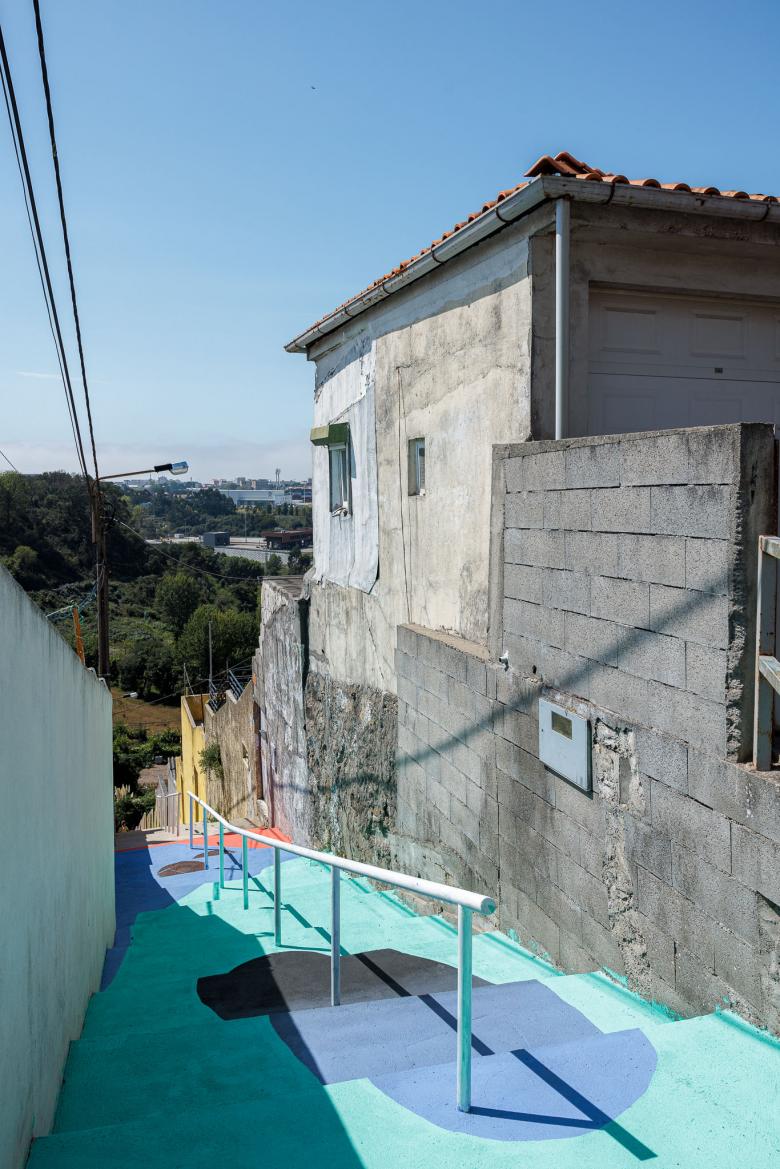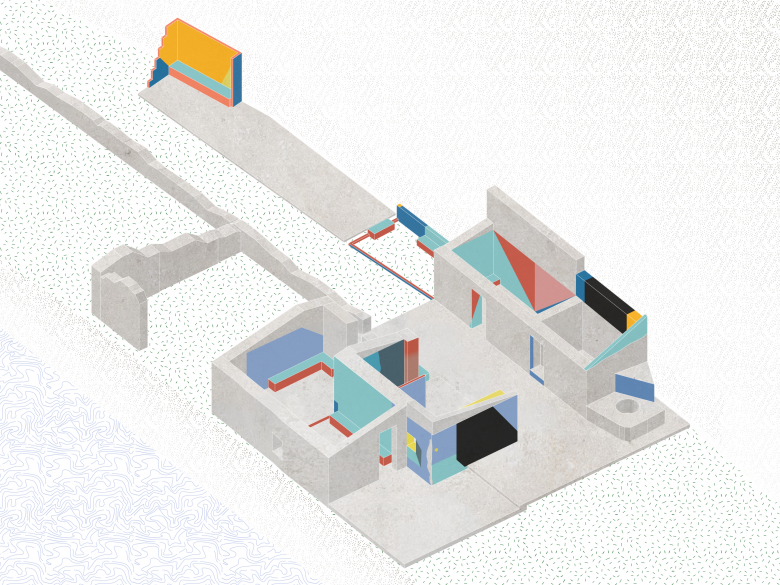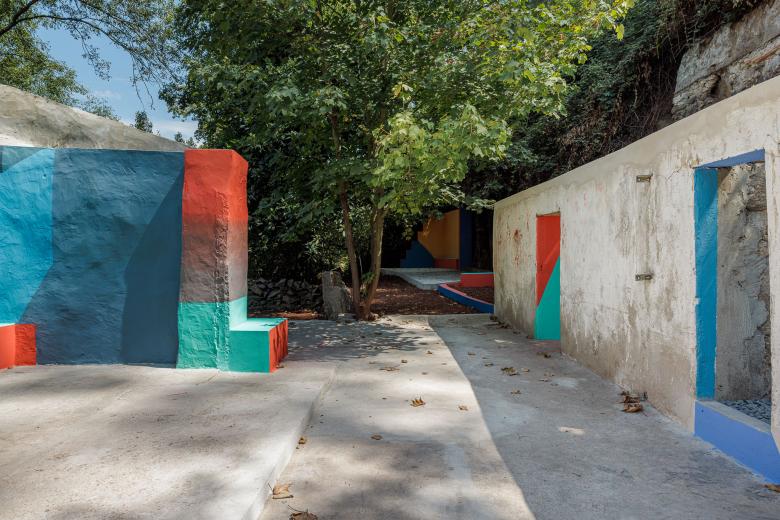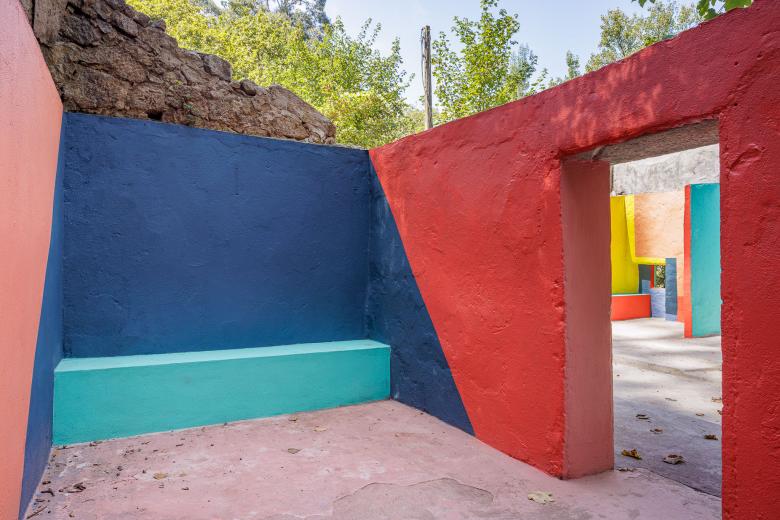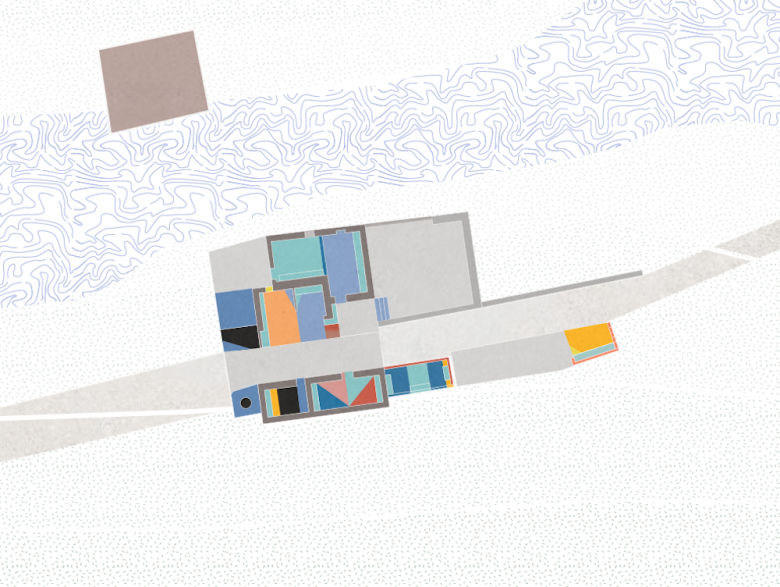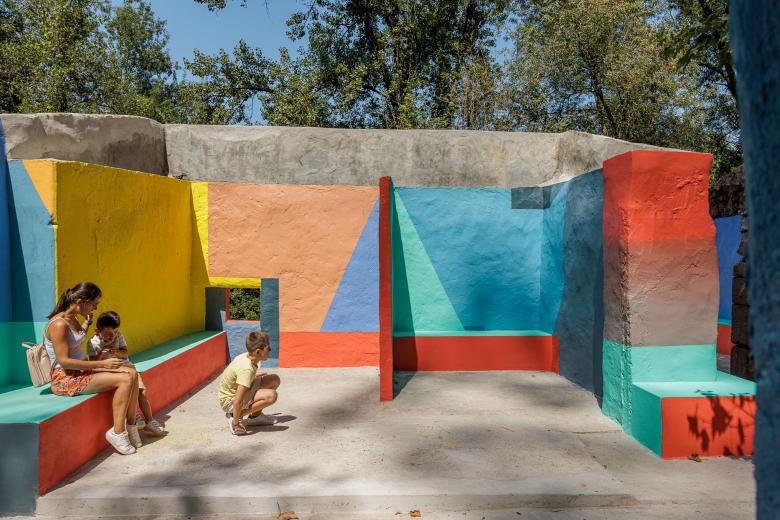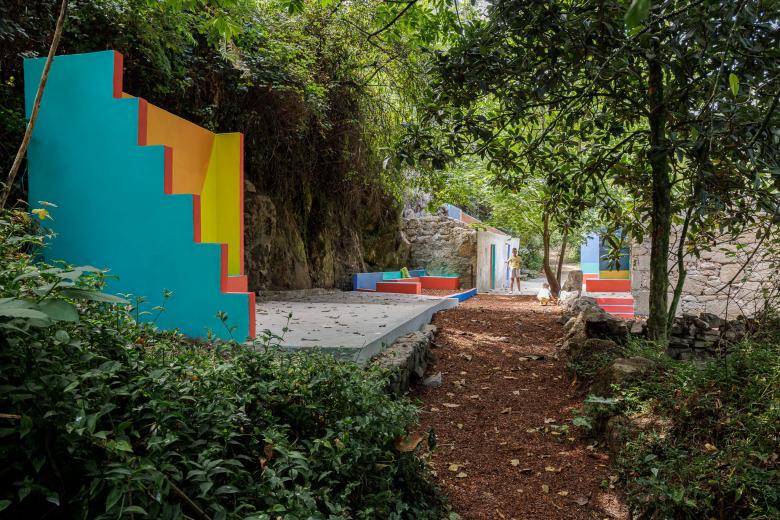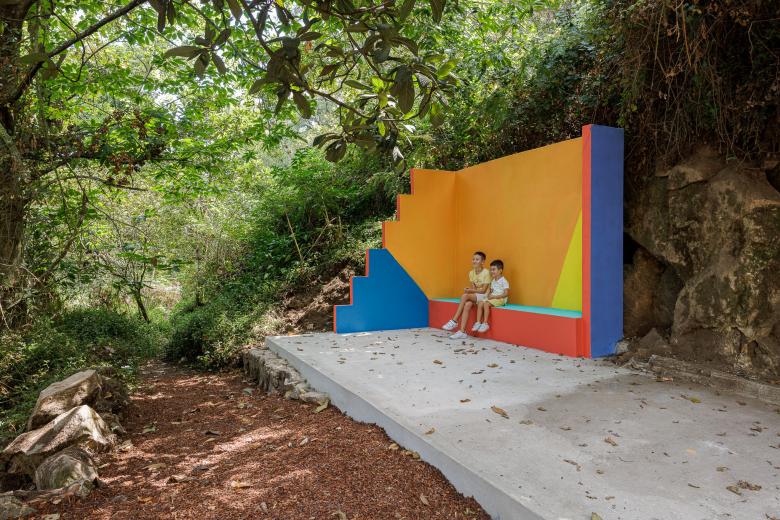Photographer Ivo Tavares sent us photographs of Escadinhas Footpaths, a network of pedestrian paths linking the the neighborhood of Monte Xisto with the Leça River in Matosinhos, Portugal. Paulo Moreira Architectures and the art collective Verkron have enlivened the paths with bright colors.
According to a project description accompanying the photographs, "the initiative is intended to demonstrate the added value that low-budget projects can bring to more 'hidden,' neglected urban spaces in our cities." The Escadinhas Footpaths project focuses on two ares in Monte Xisto: a stair leading to Rua das Escadinhas and an old ruin. Both pieces were rehabilitated before painting and had benches added to them so people can rest while walking the path.
Below are drawings, photographs, and a couple of short films on the project that was designed by Paulo Moreira Architectures with Verkron, and was promoted by INSTITUTO in the framework of Bairros Saudáveis initiative. The project also had the support of InResidence / Ágora – Cultura e Desporto and União de Freguesias - Custóias, Leça do Balio e Guifões.
The site plan clearly locates the stair at bottom and the ruin at top; note that, even though it is not indicated, north is up.
Looking from the northwest, the axonometric shows the stair leading from the town down to the path and, along the way, the wall mural set perpendicular to the steps.
Whether intentional or not, the painted wall perpendicular to the steps hints at the presence of the ruin to the north, left of the steps in the distance. (Photo © ivo tavares studio)
Before the steps and wall were painted, their surfaces were repaired. (Photo © ivo tavares studio)
The stair plan and the gradient of colors from bottom (at left) to top (at right).
The retaining wall next to the steps doubles as seating for people climbing the stair. (Photo © ivo tavares studio)
The colors appear especially bold in the narrow stretch between the walls of the neighbors. (Photo © ivo tavares studio)
Making-of video showing the painting of the stairs.
Looking from the northwest in this axon, the ruin is reached by following the narrow footpath at the bottom of the steps in a clockwise direction.
Following restoration, walls in the ruin were painted selectively, as if to draw people through the ruin and into its various spaces. (Photo © ivo tavares studio)
Just as the stair recalls earlier artworks (especially
Praça Cantão in Rio), the "rooms" in the ruin are reminiscent of the works of Luis Barragan. (Photo © ivo tavares studio)
The plan of the ruin indicates the color of the walls, given that the concrete slabs were not painted.
According to the project statement, the addition of benches "has encouraged people to spend time there and transformed it into a place for socializing." (Photo © ivo tavares studio)
The ruin is integrated with the nature along the path. (Photo © ivo tavares studio)
At the "exit" at the east end of the ruin: the path continues down along Rio Leça. (Photo © ivo tavares studio)
Making-of video showing the painting of the ruin.
